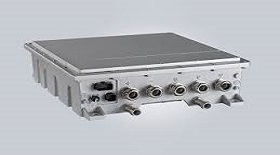Hysteresis synchronous motor
Hysteresis synchronous motor is a synchronous motor which uses hysteresis material to generate hysteresis torque. It is divided into inner rotor type hysteresis synchronous motor outer rotor type hysteresis synchronous motor and single phase cover type hysteresis synchronous motor.
The rotor structure of the internal rotor type hysteresis synchronous motor hiddens pole type. Its appearance is smooth cylindrical body, and the rotor has no winding, but the annular effective layer made of hysteresis material is used on the outer circle of the core.
When the stator winding is switched on, the rotating magnetic field produces an asynchronous torque for the hysteresis rotor to start and rotate. When the motor is running asynchronously, the stator rotating magnetic field repeatedly magnetizes the rotor with slip frequency. During synchronous operation, the hysteresis material on the rotor is magnetized and a permanent magnetic pole appears, generating synchronous torque. The soft starter adopts tri-opposite-parallel thyristor as the voltage regulator, which is connected between the power supply and the motor stator, such a circuit as a three-phase full control bridge rectifier circuit. When using the soft starter to start the motor, the output voltage of the thyristor increases gradually and the motor accelerates gradually until the thyristor is fully switched on. The motor works on the mechanical characteristics of rated voltage to achieve smooth start, reducing the starting current and avoiding over-current trip. When the motor reaches the rated revolution, the start process ends. The soft starter automatically replaces the completed thyristor with a bypass contactor, providing rated voltage for the normal operation of the motor, so as to reduce thermal loss of the thyristor and extend the service life of the soft starter, improving its working efficiency and avoiding harmonic pollution of the grid. The soft starter also provides soft stop function. Soft stop is the opposite of soft start process. The voltage gradually decreases and the revolution gradually drops to zero, avoiding torque impact caused by free stop.



